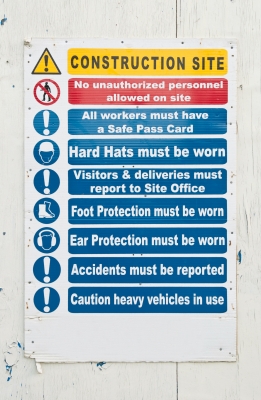 Accidents and incidents occur in the workplace for many reasons and it is an important part of risk management for organisations to understand why these instances occur and to put in place countermeasures to ensure that they do not occur again.
Accidents and incidents occur in the workplace for many reasons and it is an important part of risk management for organisations to understand why these instances occur and to put in place countermeasures to ensure that they do not occur again.
There have always been multiple opinions concerning who is at fault in cases of organisation injury and illness. Do we place the blame on the systems and procedures in place, or do we blame the individual at the centre of the problem?
This workplace argument has been the focal point of investigations and cases for causal factors of organisational accidents and incidents.
Traditionally, the operator’s error in workplace incidents is seen as the root cause of the accident or incident as human error causes failure and had it not been for the inherent unreliability of humans the system would be safe. While human error has been a known factor in majority of accidents and incidents up to 80% in some cases; understanding the role of human error in accidents and incidents is much more complex than simply blaming the operator.
The real cause of the problem
Human error is not the problem itself; it is simply just a symptom of a deeper issue that lies within the system. While human error is a major known factor in the majority of incidents it is commonly not the only casual factor involved and to simply write off accidents and incidents as human error is overly simplistic as accidents and incidents cannot be attributed to a single cause or individual operator.
The cause of accidents and incidents however often lie in the latent failures of an organisation’s systems which all line up to lead to a chain of events causing an accident or incident. As safety is not inherent within systems; the systems themselves that are contradictions of competing demands and safety is best created through educating and people. Achieving a high standard of safety within management systems through fostering a safety culture of compliance is generally more effective in safeguarding against injury or illness as most human errors are made possible by the gaps or weaknesses in these systems.
Dissecting the contributing factors
Using the Hierarchy of Controls, we can dissect the contributing factors of organisational incidents and accidents. At the top of the hierarchy are elimination, substitution and engineering. These three methods are of a higher standing because they are the most effective means of reducing workplace hazards. These strategies are aspects of organisational systems and are most effective in preventing incidents and accidents.
The lower order controls; administrative and Personal Protective Equipment are at the bottom of the hierarchy because they rely solely on human effort to ensure implementation of the control and to ensure the risk is sufficiently mitigated.
Changing perspective
Human error is systematically connected to interrelated components such as an individual’s task, tools and environment and achieving a safer working environment comes from understanding and influencing the way these connections interact.
Human Error is only part of a complex breakdown of a larger system and is the consequence not the cause of an accident or incident. Human error is therefore a major contributor to the latent and active failures that lead to the occurrence of accidents and incidents. Since human errors are typically shaped and provoked by system and organisational factors simply identifying the error is only the beginning of managing risk.
As safety is not inherent in the system an organisations focus should be on creating the processes in systems that focus on understanding how humans interact within the system and focus on influencing these interactions and learning from any previous accidents or incidents to create an error tolerant system. An error-tolerant system would focus on testing the efficacy of controls to ensure that absent or failed controls do not let expose the system to technical and human error that lead to an accident or incident. Through understanding the context in which the accident or incident occurred we can begin to understand how to prevent its reoccurrence and create organisational learning.
So while it’s easy to place the blame on one party in the event of an accident or incident the reality is, the culture of safety needs to shift in an organisation in order to drive a preventative approach or encourage organisational learning. A safety culture can be the most effective treatment of potential hazards. Instead of playing the blame game, both management and workers engaging in safe practices and sharing positive attitudes can be the driving force in reducing the incidence of both active and latent failures.
Click here for more information about creating a positive safety culture.

 Safety Australia Group
Safety Australia Group